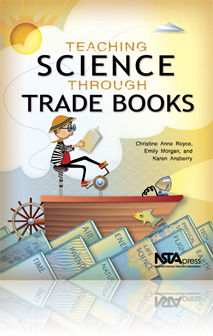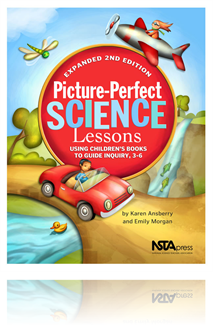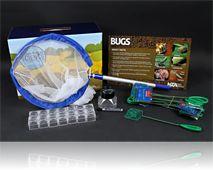All Lesson Plans resources
NSTA Press Book
Scientific Argumentation in Biology: 30 Classroom Activities
“Individuals who are proficient in science should be able to understand the language of science and participate in scientific practices, such as inquiry and argumentation. Empirical research, however, indicates that many students do not develop thi...
By Victor Sampson, Sharon Schleigh
NSTA Press Book
Exemplary Science for Building Interest in STEM Careers
National standards encourage science teachers to help “increase student economic productivity through the use of the knowledge, understandings, and skills of the scientifically literate person in their careers.” Exemplary Science for Building Int...
NSTA Press Book
Integrating Engineering and Science in Your Classroom
“I still remember my very first day as a teacher. A few days earlier, my principal had given me advice: ‘Whatever you do, do not start with an overview of your course. Do something active and set the tone….’ As I nervously awaited the arrival...
Book Chapter
Depending on you location, you may get to experience different seasons–thus meaning your environment changes. Students can begin to make initial observations about an area and then follow this area through the changes that occur over the course of ...
NSTA Press Book
Teaching Science Through Trade Books
“‘What was your favorite book as a child?’ In more than 10 years of facilitating workshops, we have never heard anyone reply, ‘My fourth-grade science textbook.’ Clearly, textbooks have an important place in the science classroom, but usin...
By Christine Anne Royce, Emily Morgan, Karen Ansberry
NSTA Press Book
Uncovering Student Ideas in Astronomy: 45 New Formative Assessment Probes
What do your students know—or think they know—about what causes night and day, why days are shorter in winter, and how to tell a planet from a star? Find out with this book on astronomy, the latest in NSTA’s popular Uncovering Student Ideas in ...
By Page Keeley, Cary Sneider
NSTA Press Book
Project Earth Science: Physical Oceanography, Revised 2nd Edition
How well can your students— • Explain why ice floats? • Model ocean currents? • Predict tides? • Describe the proper clean-up of an oil spill? ...
By Alfredo L. Aretxabaleta, Gregg R. Brooks, Nancy W. West
Book Chapter
Using a model, learners explore time zones and what causes day and night and how time zones change. Learners observed the position of the Sun in the sky at different times of day and relate those positions to the rotation of the Earth. For more info...
Class Pack
Using Picture-Perfect Science Lessons, Expanded 2nd Edition in your classroom is easier than ever! NSTA’s ClassPacks, each sufficient for a class of 28 students, are lesson-specific collections of materials—an unmatched time-saver and a great dea...




